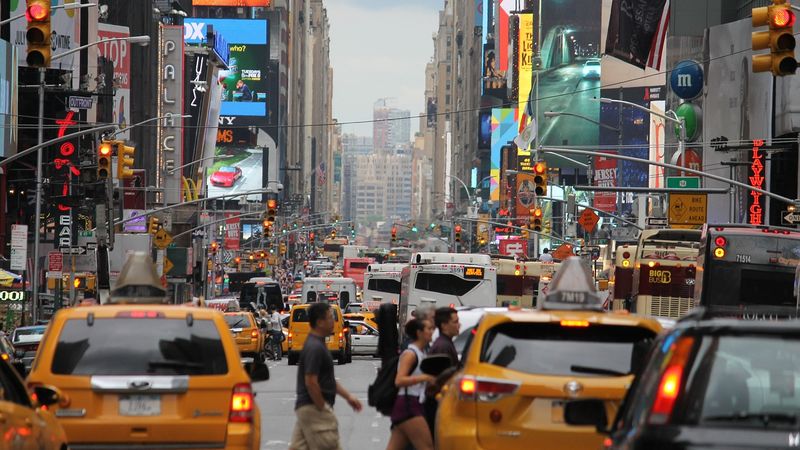New York Opts for Congestion over Pricing

Traffic is a fundamental factor that local policymakers must invariably grapple with. Street congestion costs people time and money. For both drivers and bus-riders, traffic-caused lateness can cost people jobs. People who take the better-safe-than-sorry route to avoid unpredictable transportation schedules often arrive annoyingly early and end up working for free or wasting time by idling in their cars or on park benches.
In New York City, how best to manage Manhattan’s rampant congestion has been debated in both the city and state governments for decades. In the latest iteration of this ongoing dispute, the state government shot down a proposal to charge tolls to enter the borough’s central business district. In choosing to put off implementing this or other solutions, the state has decided that addressing the city’s congestion isn’t worth challenging those vested in the transportation status quo.
New York is a somewhat unique among cities in that its central business district is located on an island. Cities like London, where the central business district lacks natural boundaries, must rely on in-road sensors to charge drivers. Yet because vehicles can only cross into Manhattan over bridges and through tunnels, the city’s congestion could theoretically be controlled with appropriately priced tolls. This solution would require less infrastructure building and investment than embedding sensors at every access point into a landlocked city.
In fact, bridge and tunnel tolls have been the primary method of controlling Manhattan congestion in the past, but they have proved insufficient for a variety of reasons. The tolls today are not structured to minimize congestion. Instead, investments in the city’s bridge and tunnel infrastructure have been bundled with those of regional airports, and cross-subsidies from bridge and tunnel operations are used to fund money-losing operations elsewhere in the agency budget.
Writing for the Manhattan Institute, transportation scholar Robert Poole explains that these cross-subsidies dilute incentives to appropriately manage all infrastructure in the Port Authority’s portfolio—including bridge and tunnel infrastructure.
The failed proposal in New York was far from ideal policy. Congestion fees work best when they apply to all drivers, since the goal is to force them to internalize the traffic externality they help cause. Exempting certain vehicles from payment divorces the fees from the goal of managing congestion, thereby reducing tolls to arbitrary charges that may not significantly reduce traffic.
The voted-down congestion bill would have exempted personal vehicles from paying congestion fees. In doing so, it would have placed the burden of taking fewer trips into the central business district on taxis and transportation network companies like Uber and Lyft. With personal vehicles exempted, much of the value of any congestion charge is lost.
A better congestion charge would have minimal exemptions. This is the trend in major cities around the world. London’s congestion charge reduced the number of miles driven by 11 percent after 10 years. Milan’s fee, initially billed as a way to reduce not traffic but air pollution, similarly reduced traffic.
Stockholm is one of the cities that most resembles New York geographically. Its central business district is on an island, accessible by bridges and tunnels. Swedish policymakers implemented congestion-tolling on these access points in 2006. While unpopular in the suburbs, the measure garnered the support of a majority of central Stockholm residents in a referendum.
Similar to what other cities experienced, traffic decreased with the congestion charge. With the charge in place, some individuals moved to public transit, while others rerouted their trips around the city, “disappearing” from congestion statistics. To keep traffic flowing, Swedish officials also removed exemptions for some vehicle classes like alternative-fuel cars.
Addressing New York congestion could make getting into and around Manhattan far more reliable. Congestion fees have proved to worked in major cities, with real-world data to demonstrate it. The success of Stockholm’s congestion charge should ease New York policymakers’ concerns, but these officials face far stronger special interests and have less power than their Swedish counterparts, who also had the backing of federal officials.
Controlling congestion works by making individuals pay for the crowding they cause. Given the potential benefits, policymakers who decide congestion-reduction has value must find the strength to bear the burden of the inevitable backlash.








